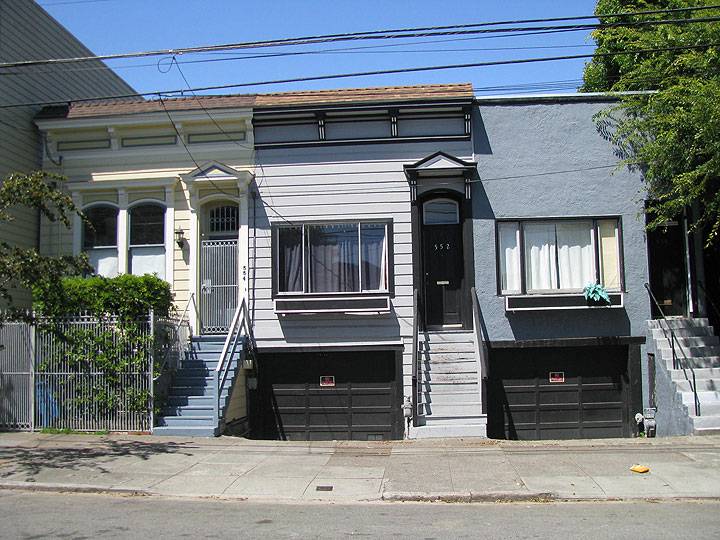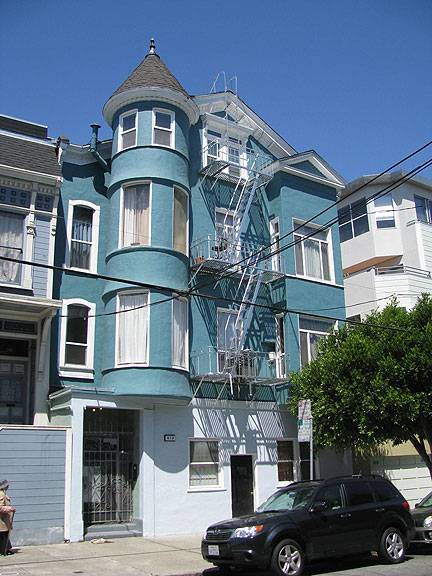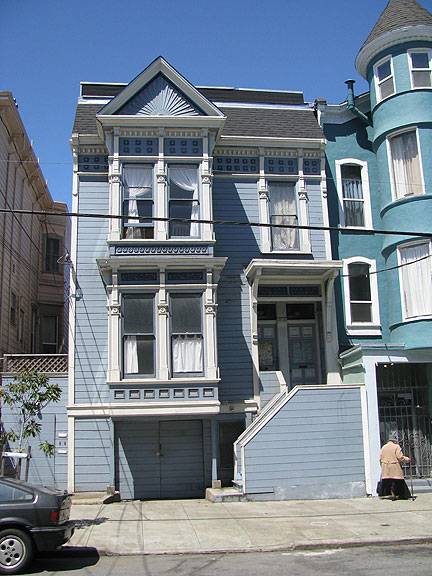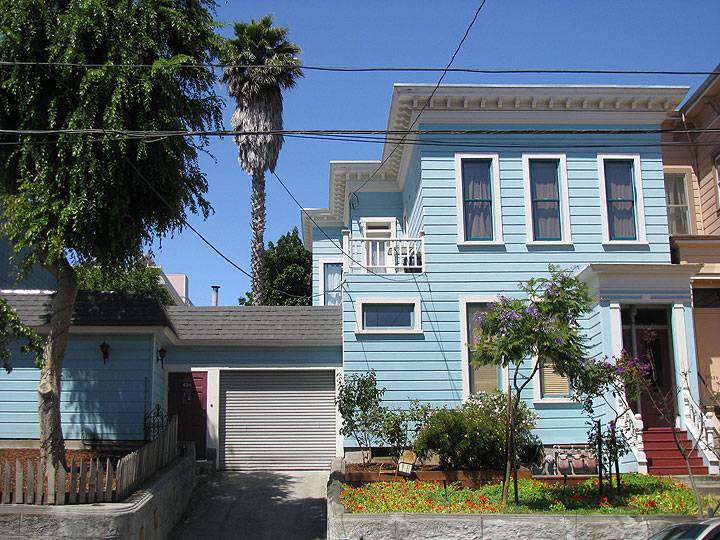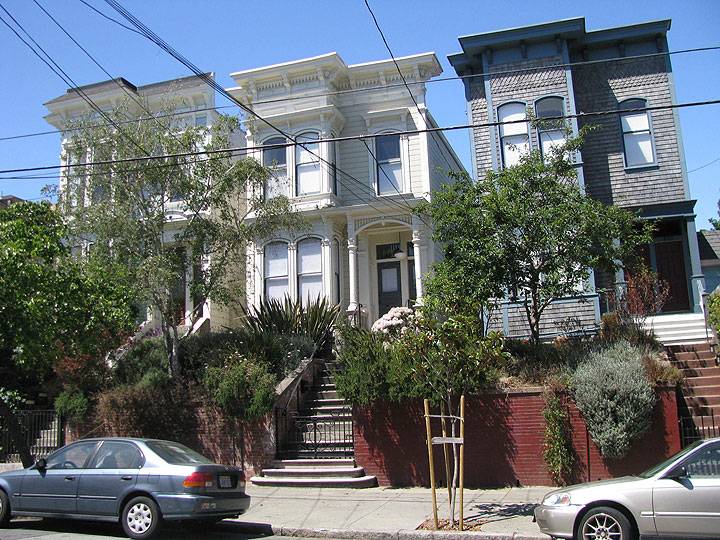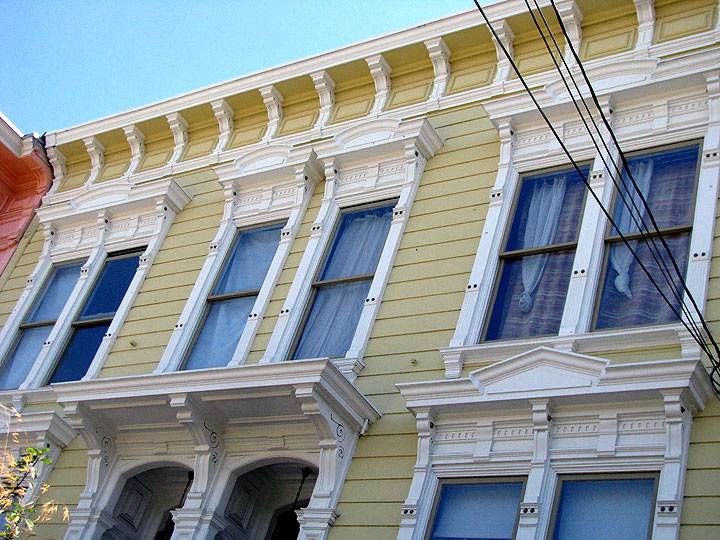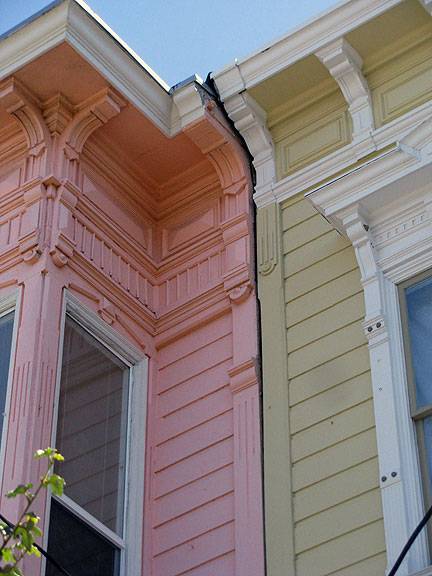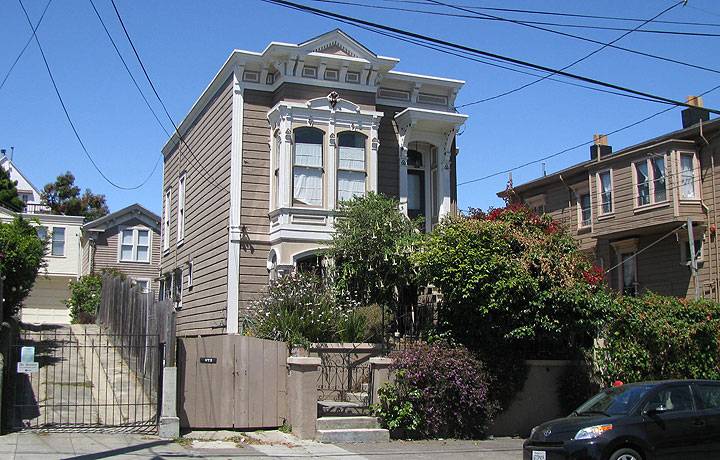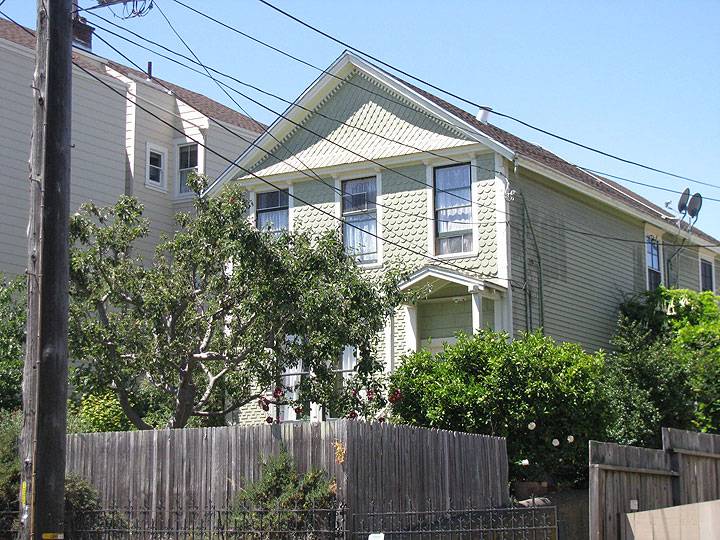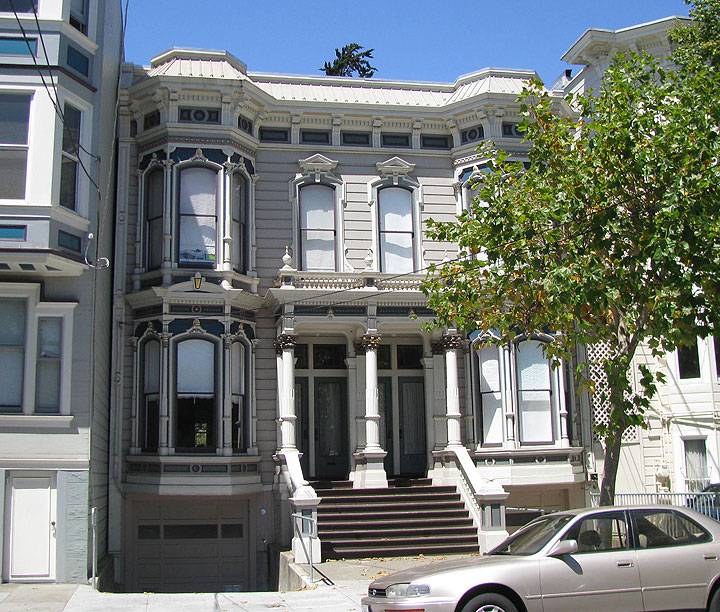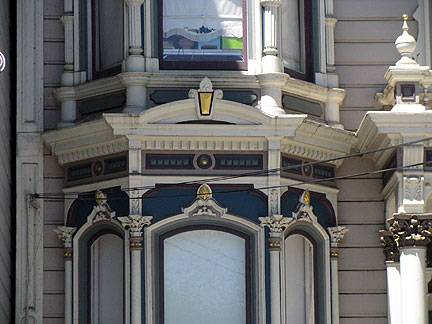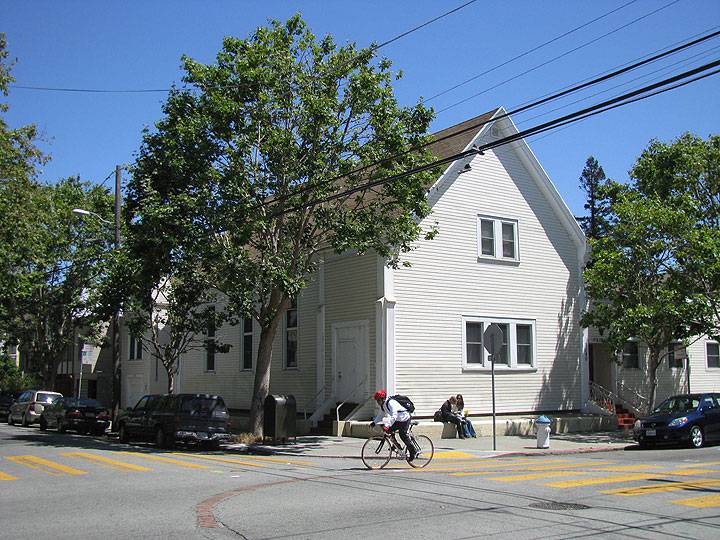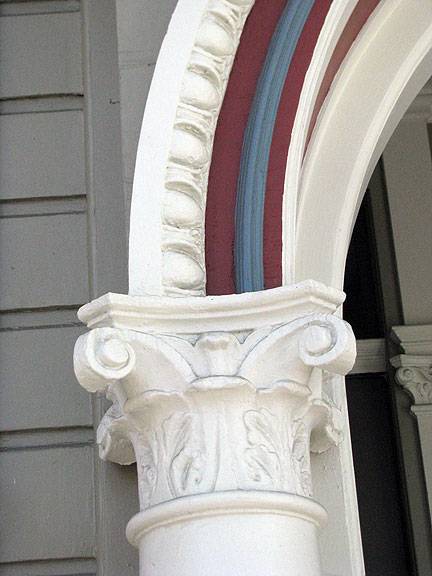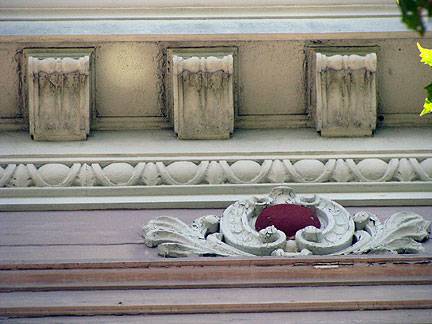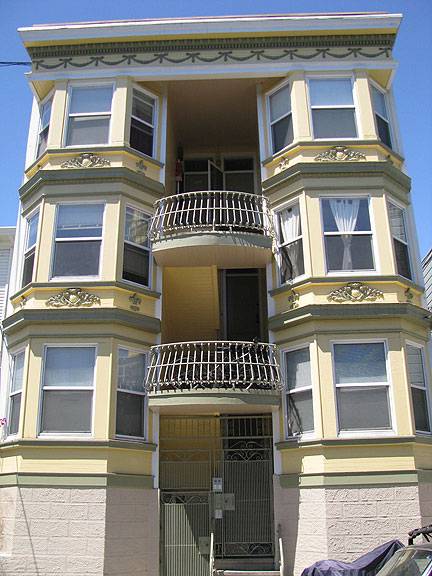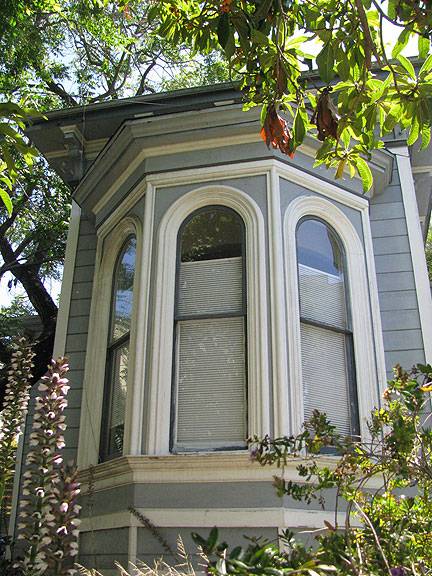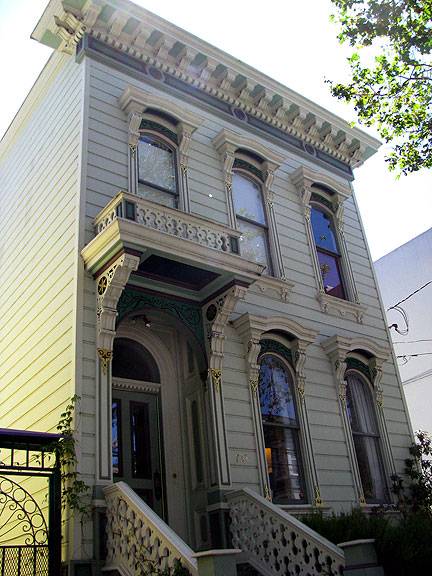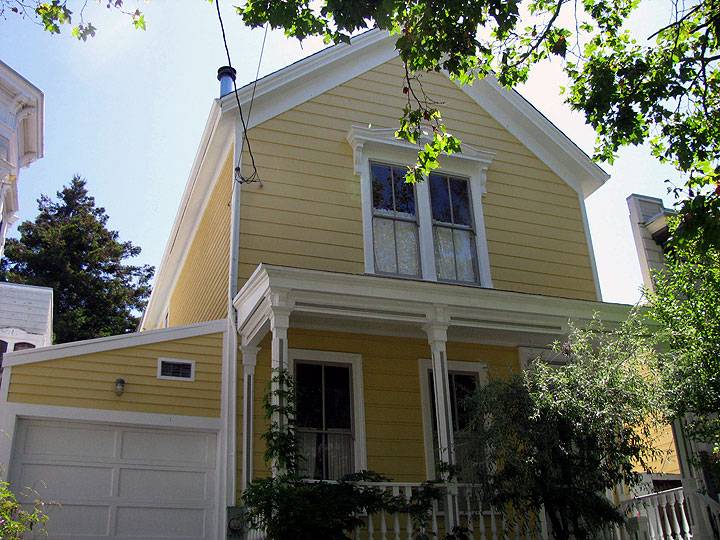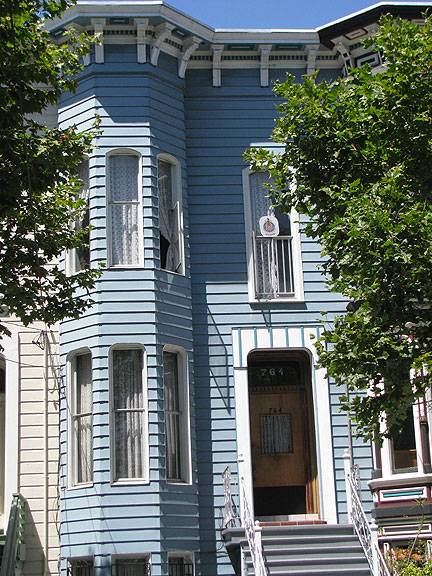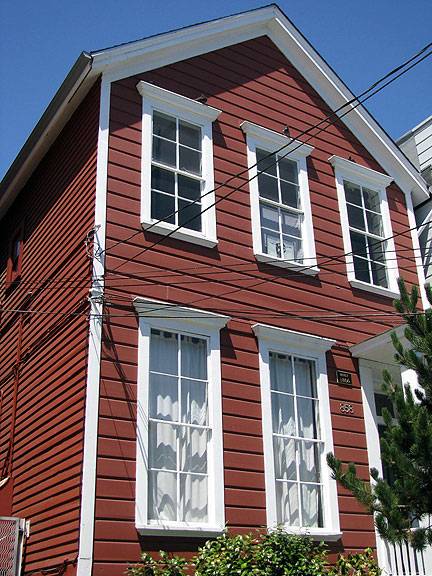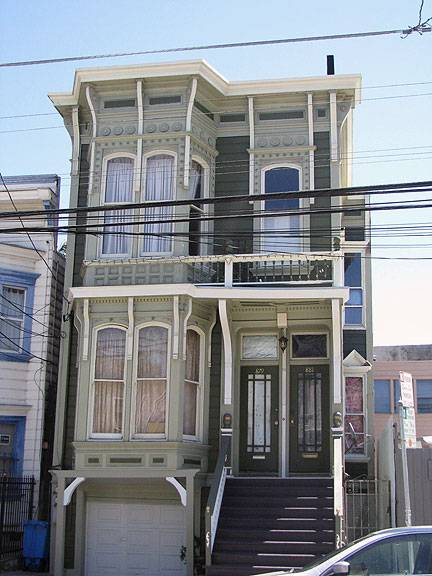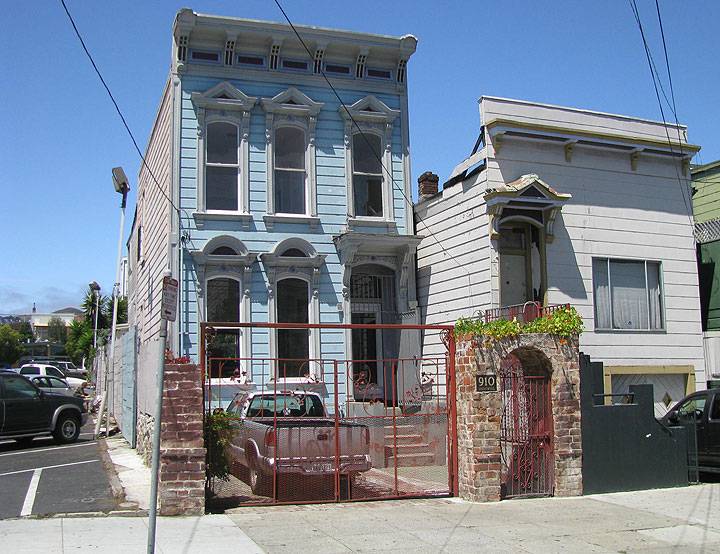Shotwell Architectural Tour: Difference between revisions
(Created page with ''''<font face = Papyrus> <font color = maroon> <font size = 4>Historical Essay</font></font> </font>''' ''by Mary Brown'' Shotwell Street was one of the first graded and paved ...') |
(added subhead and to be continued) |
||
| Line 1: | Line 1: | ||
'''<font face = Papyrus> <font color = maroon> <font size = 4>Historical Essay</font></font> </font>''' | '''<font face = Papyrus> <font color = maroon> <font size = 4>Historical Essay</font></font> </font>''' | ||
''by Mary Brown'' | ''by Mary Brown (under construction, come back for a soon-to-be finished entry)'' | ||
Shotwell Street was one of the first graded and paved streets in the Mission District. | Shotwell Street was one of the first graded and paved streets in the Mission District. | ||
<font size=4>'''19th Street to 20th Street'''</font size> | |||
[[Image:Three-worker-cottage 0499.jpg]] | [[Image:Three-worker-cottage 0499.jpg]] | ||
Revision as of 22:40, 4 August 2010
Historical Essay
by Mary Brown (under construction, come back for a soon-to-be finished entry)
Shotwell Street was one of the first graded and paved streets in the Mission District.
19th Street to 20th Street
These tiny flat front Italianate cottages on the west side of Shotwell Street between 19th and 20th Streets date to at least 1865. Back then they were occupied by male workers from the Mission Woolen Mills, located a block and a half north to the north on Shotwell. The houses are located on the site of the former Pioneer race track, (details here), which operated from 185X to 186X. The pear-shaped race track occupied an off-grid space spanning roughly from what is now the corner of 19th and South Van Ness to... Originally, all three houses were likely identical—alterations such as recladding in stucco and the removal of what was seen as unfashionable Victoriana ornament was common in the 1920s-1960s.
Photo: Chris Carlsson
Caption to come
Photo: Chris Carlsson
Caption to come
Photo: Chris Carlsson
Caption to come
Photo: Chris Carlsson
Caption to come
Photo: Chris Carlsson
Caption to come
Photo: Chris Carlsson
Caption to come
Photo: Chris Carlsson
Caption to come
Photo: Chris Carlsson
Caption to come
Photo: Chris Carlsson
Caption to come
Photo: Chris Carlsson
Caption to come
Photo: Chris Carlsson
Caption to come
Photo: Chris Carlsson
Caption to come
Photo: Chris Carlsson
Caption to come
Photo: Chris Carlsson
Caption to come
Photo: Chris Carlsson
Romeo flats are a unique building type endemic to San Francisco. The flats are characterized by a central balcony stairway flanked by full-story bay windows. Romeo flats most commonly contain six units, though four-unit flats are occasionally found. These buildings are associated with the Reconstruction of San Francisco following the 1906 earthquake and fire. Demands for new housing resulted in the densification of the northern half of the Mission District as destroyed single-family houses were replaced with multi-unit dwellings. Romeo flats generally draw from the Classical Revival design idiom -- common features include Classical columns and detailing, projecting denticulated cornices, and heavy block or scroll modillions.
Photo: Chris Carlsson
Caption to come
Photo: Chris Carlsson
Caption to come
Photo: Chris Carlsson
Caption to come
Photo: Chris Carlsson
Caption to come
Photo: Chris Carlsson
A rare example of a Greek Revival house, one of only a handful in the Mission District. According to the mounted plaque, it was constructed in 1866 -- a likely accurate date given the early development of these central blocks on Shotwell Street. It also appears on the 1869 United States Coast Survey Map. In San Francisco, Greek Revival houses, sometimes referred to as "National Style" are simple wood-frame houses capped with forward-facing gable roofs. Usually clad in rustic wood siding, the largely unadorned houses feature simple lintels and porticos. It appears that this house retains its original windows -- very early windows are double-hung divided into four panes on the upper and lower sash. These early windows are extremely rare in San Francisco.
Photo: Chris Carlsson
Caption to come
Photo: Chris Carlsson
A lonely flat front Italiante abuts Cala's vast, rarely used sea of parking. Since this photo was taken (2009?) a fire damaged the front facade. (boarded up?). This building likely dates from the late 1860s to early 1870s. The building retains its
Photo: Chris Carlsson

